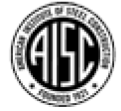How Weather Affects Communication Tower Construction
Building communication towers involves a lot of important steps. You must prepare the site, erect the tower, and perform regular maintenance. Unpredictable weather can pose logistical challenges to any of these steps and result in several risks. Understanding how weather affects communication tower construction allows you to take precautions, increase safety, and perform necessary tasks without exceeding your deadline. Here are some of the most common weather conditions that can influence communication tower projects and how professionals can safeguard against negative effects.
The Role of Weather in Project Planning
Planning is the most important aspect of a communication tower project, and an effective plan relies on understanding the weather. Large-scale projects often face scheduling interruptions when adverse weather conditions delay tasks such as excavation or concrete pouring.
Professionals must include weather-related contingencies in their plans to account for challenges. This involves considering region-specific factors; for example, some areas are more likely to experience hurricanes, tornadoes, or earthquakes.
Site Selection and Seasonal Implications
Choosing a site for a communication tower requires assessing geographical and environmental factors. Areas with heavy rainfall, for example, necessitate careful evaluation of drainage systems and soil stability to ensure the tower is supported.
Cold climates demand specific attention to frozen ground and frost heave. Seasonal variables play a major role during this phase, as excessive rainfall or snow may render certain sites inaccessible. Properly evaluating weather trends ensures the construction team can anticipate problems before they arise and minimize delays once work begins.
How Extreme Temperatures Affect Construction Materials
A common weather condition to worry about during communication tower construction is extreme temperatures. Some materials are susceptible to temperature fluctuations, so it’s important to understand and manage these sensitivities to create a structurally sound tower.
Concrete requires specific curing conditions to reach its full strength and hardness, and external elements like extreme cold may compromise the cement or the curing on the tower. Similarly, high temperatures may reduce the functionality of protective coatings, leading to premature wear and corrosion over time. Professionals must employ temperature-specific techniques, such as using accelerants in winter or scheduling pours in the cooler hours during summer.
The Challenge of Working in Windy Conditions
While we normally associate inclement weather with heavy rain or snow, one of the most dangerous and common conditions is heavy winds. High wind speeds make it difficult and hazardous to work at elevated heights and can lead to instability or accidents when operating cranes or hoists.
Even moderate winds can disrupt the precision needed when fitting tower components together. To combat this, construction managers often rely on wind monitoring systems to assess safe working conditions. It may be a good idea to postpone activities like lifting and hosting until the wind slows down to favorable conditions. This can reduce the risk of accidents which could otherwise delay the project.
Rain and Its Impact on Ground Conditions
Heavy rainfall can turn solid ground into an unstable mud field, making construction work difficult or even impossible in some situations. Lengthy downpours can lead to drainage problems, particularly on sites with slopes or in low-lying areas.
Poorly drained construction sites risk having foundational structures shift or settle unevenly, which can jeopardize the structural integrity of the tower. It’s important to manage the site’s drainage with walls, culverts, or temporary pumping systems. These can minimize the disruptions that come from rain, making it possible to get work done.
The Dangers of Ice and Snow
Ice and snow are genuine threats to workers and the infrastructure around the tower. Ice accumulation can increase the weight and stress on temporary structures, creating safety hazards during construction.
Naturally, these conditions can also create greater risks of slips and falls. Whether workers are navigating on steep terrain or attempting to climb the tower, winter weather poses noteworthy challenges. Consider anti-icing treatment options when attempting to perform tower maintenance or operations during the colder months.
Lightning and Thunderstorms During Tower Erection
Lightning strikes are a significant concern for communication tower professionals, especially during the steel-erection phase when the tower acts as a lightning conductor. Thunderstorms can halt construction, as they pose a safety hazard for on-site crews working with conductive materials at height.
Always maintain clear communication, and track real-time weather forecasts if you suspect lightning or thunder in the area. Shutdown protocols are more important than ever during a heavy storm to safeguard personnel and equipment.
The Role of Humidity and Moisture
When thinking about how weather affects communication tower construction, it might seem obvious to check for rain, snow, or high winds, but you should consider other environmental factors as well. While high humidity may not seem as threatening as wind or ice, it can still affect the productivity of tower projects.
Humidity can corrode steel components and negatively affect structural anchors, requiring protective coatings or more maintenance. Excessive moisture in colder temperatures can result in expansion that can damage the tower’s structural integrity.
The Effect of Weather on Worker Safety
No matter what type of weather effects you’re dealing with on a project, you should always consider the well-being of workers experiencing those environmental conditions. Heat stress, frostbite, and dehydration are concerns for teams working in extreme temperatures for prolonged periods. Similarly, stormy weather can disrupt operations or cause unsafe working conditions that demand immediate evacuation.
Implementing advanced safety measures, including frequent weather monitoring and access to protective gear, is vital for maintaining productivity without compromising safety. Communication tower projects benefit from comprehensive weather-response plans and protocols that address the specific challenges related to the site.
Preparing for Weather-Related Uncertainty
Communication tower professionals should have a general understanding of the unpredictable nature of weather. Every phase, from initial planning to tower completion, should account for climate factors and how they may disrupt schedules or budgets.
Mitigation strategies such as selecting durable materials, creating well-drained sites, and monitoring environmental conditions ensure that projects proceed efficiently despite weather-related obstacles. Knowing how to recognize and respond to inclement weather allows builders to deliver reliable and structurally sound towers in a safe environment.
If you’re looking for a trusted partner in cell tower construction, Allstate Tower, a division of the Pittsburg Tank & Tower Group, is here to help. With decades of experience and a commitment to quality, we deliver reliable solutions tailored to your needs. Contact us today to learn more about what we have to offer and how we can help manage your project with expertise and precision.
Copyright © 2024 Pittsburg Tank & Tower Group. All Rights Reserved
















